Art for the Common Man
by Bob Brooke
When most people think of folk art, they
probably imagine art done by ordinary people without artistic
training. And they’d be right. But folk art takes in much more than
that. Elie Nadelman, a New York sculptor, and his wife, Viola, knew
that, and to them folk art became a collecting obsession.
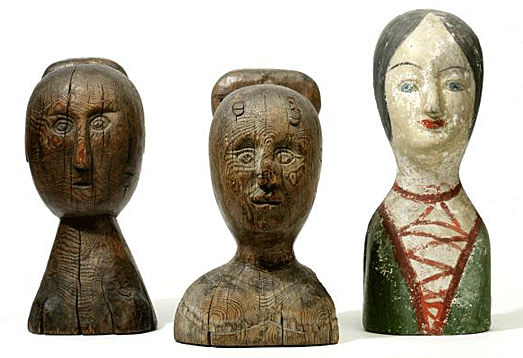
This summer, the New York Historical Society will celebrate their
fantastic collection in an exhibition entitled “The Folk Art
Collection of Elie Nadelman—Making It Modern.” On view from May 20
through August 21, the exhibit features more than 200 objects across
a wide range of media including furniture, sculpture, paintings,
ceramics, glass, iron, textiles, drawings and watercolors, and
household tools.
The objects collected by Nadelmans made up the first public folk art
collection in the United States, as well as the first ever to
consider the European roots of American folk art.
What is Folk Art?
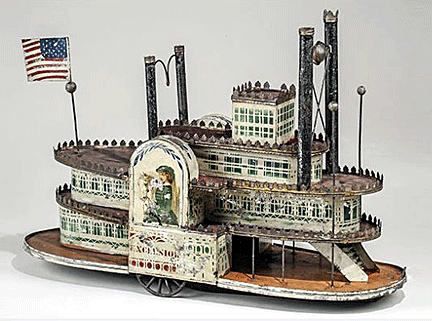 Generally,
folk art is not influenced by movements in fine art. Although folk
art usually excludes works done by professional artists, many 18th-
and 19th-century American folk art painters made their living by
their work, including itinerant portrait painters. Generally,
folk art is not influenced by movements in fine art. Although folk
art usually excludes works done by professional artists, many 18th-
and 19th-century American folk art painters made their living by
their work, including itinerant portrait painters.
While tribal art, primitive art, tramp art, and popular art, such as
the paintings of Campbell Soup cans by Andy Warhol are often lumped
together as folk art, in fact, each is distinctive in its own right.
Folk art encompasses a range of utilitarian and decorative media,
including cloth, wood, paper, clay, metal and more. If an artist
cannot find traditional materials to use, he or she will often
substitute new materials, resulting in contemporary expressions of
traditional folk art forms. Elie Nadelman knew this from his own
work and applied it to the objects he and his wife collected over
the years.
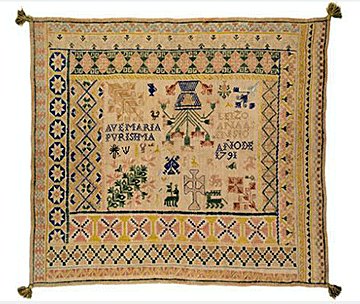 But
all folk art has one common characteristic—it’s colorful. Most folk
artists learn their skills and techniques through apprenticeships in
informal community settings, such as the art produced in villages in
Bali, Indonesia, where the artists in each village specialize in one
type of art, be it wood carving or painting or whatever. Above all,
all folk art is simple and direct. But
all folk art has one common characteristic—it’s colorful. Most folk
artists learn their skills and techniques through apprenticeships in
informal community settings, such as the art produced in villages in
Bali, Indonesia, where the artists in each village specialize in one
type of art, be it wood carving or painting or whatever. Above all,
all folk art is simple and direct.
Today, collectors assemble their antique folk art collections based
mostly on the individual pieces’ artistic merit. The people who
created them never intended them to be art. Examples of this type of
folk art include weathervanes, old store signs and carved figures,
itinerant portraits, carousel horses, fire buckets, painted game
boards, cast iron doorstops and many other "whimsical" antiques.
Elie Nadleman—Artist and
Collector
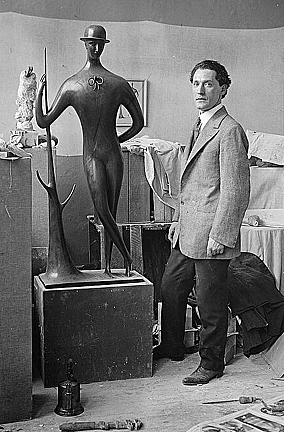 Widely
recognized for his elegant and spare modernist sculptures, Elie
Nadelman is less known for his role as a pioneering American folk
art collector. Widely
recognized for his elegant and spare modernist sculptures, Elie
Nadelman is less known for his role as a pioneering American folk
art collector.
Born in Poland in 1882, Elie Nadelman studied sculpture in Paris and
Munich, both of which were a hotbed of avant-garde art and ideas,
prior to World War I After immigrating to New York City in 1914, he
established a reputation for his witty, modernist sculptures. In
1919, Nadelman married Viola Spiess Flannery, a European-educated
wealthy widow. Shortly after their marriage, the couple began
collecting folk art, which eventually became an obsession.
From 1926 until 1937, the Nadelmans displayed their collection,
spanning 600 years and 13 countries, in their own Museum of Folk and
Peasant Arts in Riverdale, New York. This museum was the first of
its kind in the United States. In fact, the Nadelmans were among the
earliest collectors to use the term "folk art" to describe common
objects marked by bright colors, flat patterns, and simple forms.
But the stock market crash of 1929 took its toll. As the ensuing
Great Depression enveloped the country, the Nadelmans began to sell
off works from their collection to finance its upkeep. In 1937, they
sold the entire collection of some 15,000 objects to the New York
Historical Society.
The Exhibition
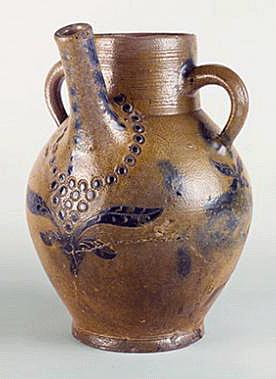 The
exhibition offers new insights into the intersection of folk art and
modernism, the Nadelmans' enduring influence on the history of
American art collecting, and the relationship between American and
European folk art. The exhibit of the Nadelman folk art collection
not only recognizes Nadelman's eye for collecting a rich cornucopia
of wonderful yet simple forms, it also reexamines folk art's
influence on his own sculpture The
exhibition offers new insights into the intersection of folk art and
modernism, the Nadelmans' enduring influence on the history of
American art collecting, and the relationship between American and
European folk art. The exhibit of the Nadelman folk art collection
not only recognizes Nadelman's eye for collecting a rich cornucopia
of wonderful yet simple forms, it also reexamines folk art's
influence on his own sculpture
The Historical Society included many of the objects from its
Nadelman Collection,
supplemented by several pieces of Elie Nadelman's sculpture on loan
for the exhibit.
Organized primarily by medium and evoking the displays in the
Nadelmans' Museum of Folk and Peasant Arts, the exhibition will
highlight new discoveries about objects in the Historical Society's
Nadelman collection. The exhibition will also trace the provenance
of many of the Nadelmans' purchases using data recorded on the
curatorial cards of the Museum and Folk and Peasant Arts, which the
family has kept and which were never studied.
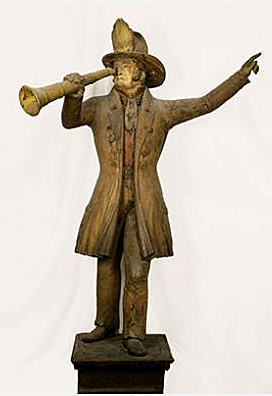 Highlights
include the regal chalkware bust of a woman, a prized piece created
in the first half of the 19th century. It represents a folk art type
that may have influenced Nadelman's work. Another piece that’s worth
seeing is the monumental carved and painted wood statue of fire
chief Harry Howard, created around 1855, which stands at nearly nine
feet tall and celebrates one of the most famous figures in New York
City's firefighting history. Highlights
include the regal chalkware bust of a woman, a prized piece created
in the first half of the 19th century. It represents a folk art type
that may have influenced Nadelman's work. Another piece that’s worth
seeing is the monumental carved and painted wood statue of fire
chief Harry Howard, created around 1855, which stands at nearly nine
feet tall and celebrates one of the most famous figures in New York
City's firefighting history.
Other exhibition highlights include objects from everyday life, such
as an 18th-century Dutch baby walker, a kakelorum, a game of chance
played with marbles from southern Germany from the latter part of
the same century, and a spouted stoneware pitcher with cobalt blue
flowers and vines from 1798, an outstanding piece of early New York
City pottery and one of the Nadelmans' most prized pieces.
To learn more about this exhibition and to purchase tickets, visit the
New
York Historical Society page.
<
Back to Antiques News Archives Next Article > |
